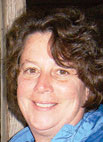
The alarm came over the phone, and Larry and Juliana Davis of Miami, Okla., scurried into a recently built safe room. A minute and a half later a tornado touched down 200 yards away before returning to the storm above. This tornado had been spawned by the same system that demolished Moore, Okla. After 20 minutes the owners of Twin Rivers Grain and Cattle emerged to find their house and one equipment shed with all of their equipment unharmed, but six buildings and their grain bins destroyed. Cows were racing every which way; old trees were snapped and uprooted. One blessing is that none of the cattle were injured although it took three hours just to get a truck in to begin rounding up the frightened animals.
In the first five weeks after the storm, now the end of June, most trees had been cleared, one of five large grain bins replaced, debris organized and rebuilding begun although they still had only minimal power complicating, everything they did. Larry said, “We were insurance poor but still lost a lot of money.”
Keeping the 4,500-acre grain and cattle operation functioning after the storm required creative intelligence and ingenuity. The most critical need was to get the 1,500-acre wheat crop harvested and to market without normal grain storage capacity. This required waiting until the wheat was dry enough to take directly to market and then running nine truckloads a day to the elevator in Inola, Okla., with the overflow augured into the one new bin. Larry said, “What I do is overcome obstacles, and how successful I am is how successful I am at overcoming those obstacles. I am the gopher and the taxicab driver. I’m constantly moving trucks and people to where they need to be.”
The most dominant characteristic of the Davis grain operation is intensive land usage. Therefore, while the crop was being harvested, straw was being baled and the land seeded with Bermuda which will be harvested one more time and then used as pasture or for more haying as needed. The straw, this year 4,000 bales, is immediately sold by the ton to a nearby mushroom plant.
A second part of his land usage involves planting wheat and harvesting it then followed by soybeans then coming back the next year with corn and starting the process with wheat again. In spite of this wet spring, Larry was able to get all of his planting done because of large equipment, which includes a 3-year-old John Deere planter equipped with GPS which plants 47 bean rows at a time. Larry said, “My dad taught me how to use the land, which my grandfather had surveyed and cleared before statehood. My dad worked closely with the Extension Service and so do I.”
An important part of intensive land usage, according to Larry, is proper fertilizing. He uses chicken litter in the winter and incorporates it as needed. He explained that whenever he gets a little money ahead he puts it back into the land with whatever fertilizer or chemicals it needs at the time. He also uses no-till whenever possible, especially on slopes.
The ranch supports 350 commercial momma cows and 18 Simmental and Simmental cross bulls. The cows are freshened in the fall with the calves being sold every spring at 400 to 700 pounds. Larry smiled and said, “Wish I could get them to be born on the same day so they could all be 700 pounds.” Larry uses creep gates into wheat fields fall, winter and spring for unlimited wheat grazing for the calves, with cows being allowed access according to supply and need, decreasing protein costs.
As with everybody else, recent drought impacted the operation. Corn acreage only produced 17 bushels per acre last year. In addition corn stalks were mixed with straw, silage and a sweet protein supplement for cattle roughage while wheat straw was mixed with Bermuda hay to stretch feed.
The farm also lost all of its water, which forced Larry to install rural water. Larry said “If I had to do it all over again, I’d start with rural water in the first place.” He explained that the cost and maintenance of his on-facility water was not only higher than installing and using rural water but also supplied the cattle with clean, fresh water which was much better for them.







